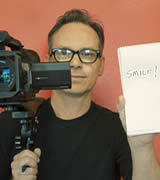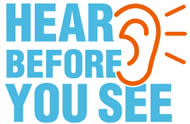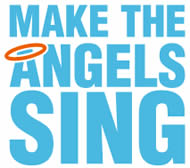| BlueSky Business Aviation News | ||||||||||||||||
|
||||||||||||||||
There are birds outside, and traffic and wind. In the office, the air conditioner hums and there is a low murmur of workers at their keyboards and telephones. The factory comes on like a cacophony, but if you listen to the individual workers and machines you notice theyíre each playing their own individual parts. Itís still no symphony, but there is a rhythm to the place. Try finding it.
Not So Quiet on the Set Interviews or dialogue between characters should have clean and clear audio free of distractions when possible. But that doesnít mean they should sound airless. When the interview is over, record 30 seconds or more of the natural sound at the location, indoors or outdoors. Then lay it low in your mix beneath the scene. It will help to cover the sound of any cuts and will subtly bring the room or location to life. Here are a few other suggestions: ē While youíre gathering B-roll, look for shots that are more than just eye candy. Gather shots with good opportunities for sound. A drill in a workerís hand, for example, water from a faucet, fingers on a keyboard. These little bits make great transitions. ē Speaking of audio transitions, try working them into your piece with a J-cut or L-cut. A J-cut is when you hear the audio before you see the video. Itís an effective way to get from one scene to another. Weíre on a shot of an executive at a bank finalizing a loan, for example, and while heís signing the papers we hear the roar of a jet engine. Then we see him working onboard the aircraft in flight. ē An L-cut is the opposite. The audio from the previous scene continues as we see the video from the next. The guy is being denied a bank loan, for example, and we continue to hear that conversation while we watch the beginning of the next scene: sad guy driving down the road. ē No mic, or forgot to record natural sound? You can easily find a replacement sound online. Search for sound effects and marvel at how many sites offer varieties of sounds, from office spaces, to sea shores, to specific types of aircraft engines. Youíll find what youíre looking for, or something close enough. Cue the Band Music wonít make your video, but it might break it. You should put as much thought into it as you have every other element of the video. Here some things to keep in mind when selecting a track. Taste is subjective, so be objective. You are looking for music that best works for the story on screen. Forget what you like or what makes you want to dance at your desk. Focus on how it works in your piece. Does it set the right tone and serve the scene, the story, the brand?
Speaking of, maybe donít do that. Try using 15-second stings (short cuts of music) throughout the video. They can serve as an opener and then scene transitions. In between, youíll have room for all that natural sound youíve recorded. Donít fall in love. And especially donít fall in love with a track that is out of your league. Never use a song by a popular artist, for example, even as a placeholder, if you canít afford to use it in the finished piece. You will fall in love with it during editing only to have to settle for something else in the end. It will never feel the same.
The key to incorporating any of these suggestions in your work is to try them and fail then try them again until they work. Itís an art, not a science. But you'll know good sound design when you hear it.
|
||||||||||||||||




